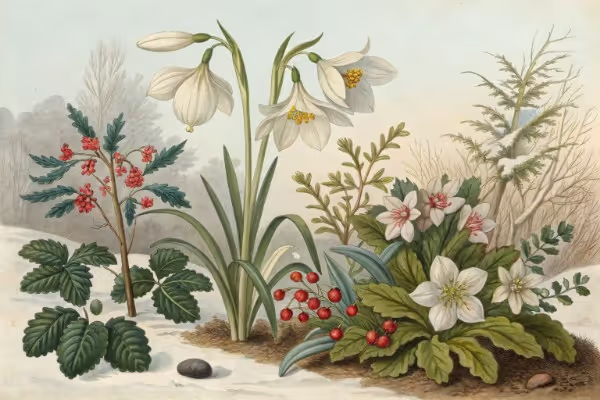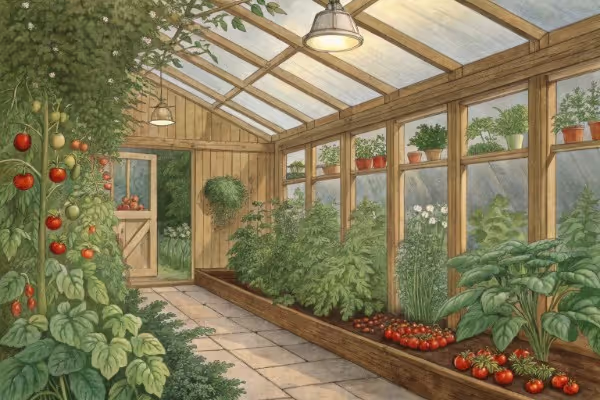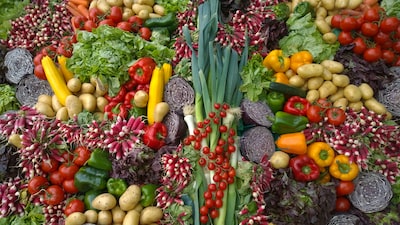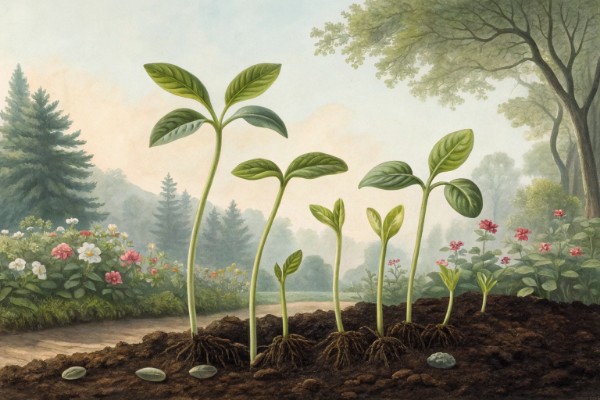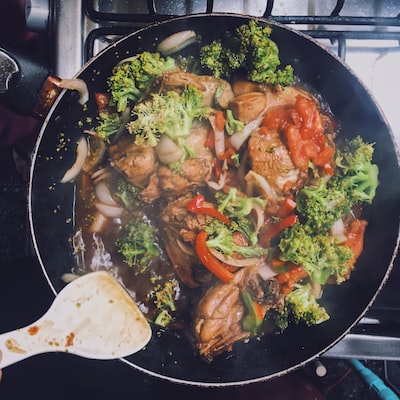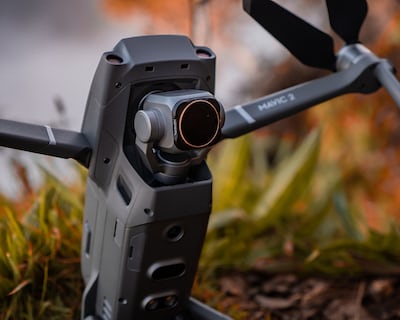DIY Bee Hotels and Pollinator Sanctuaries
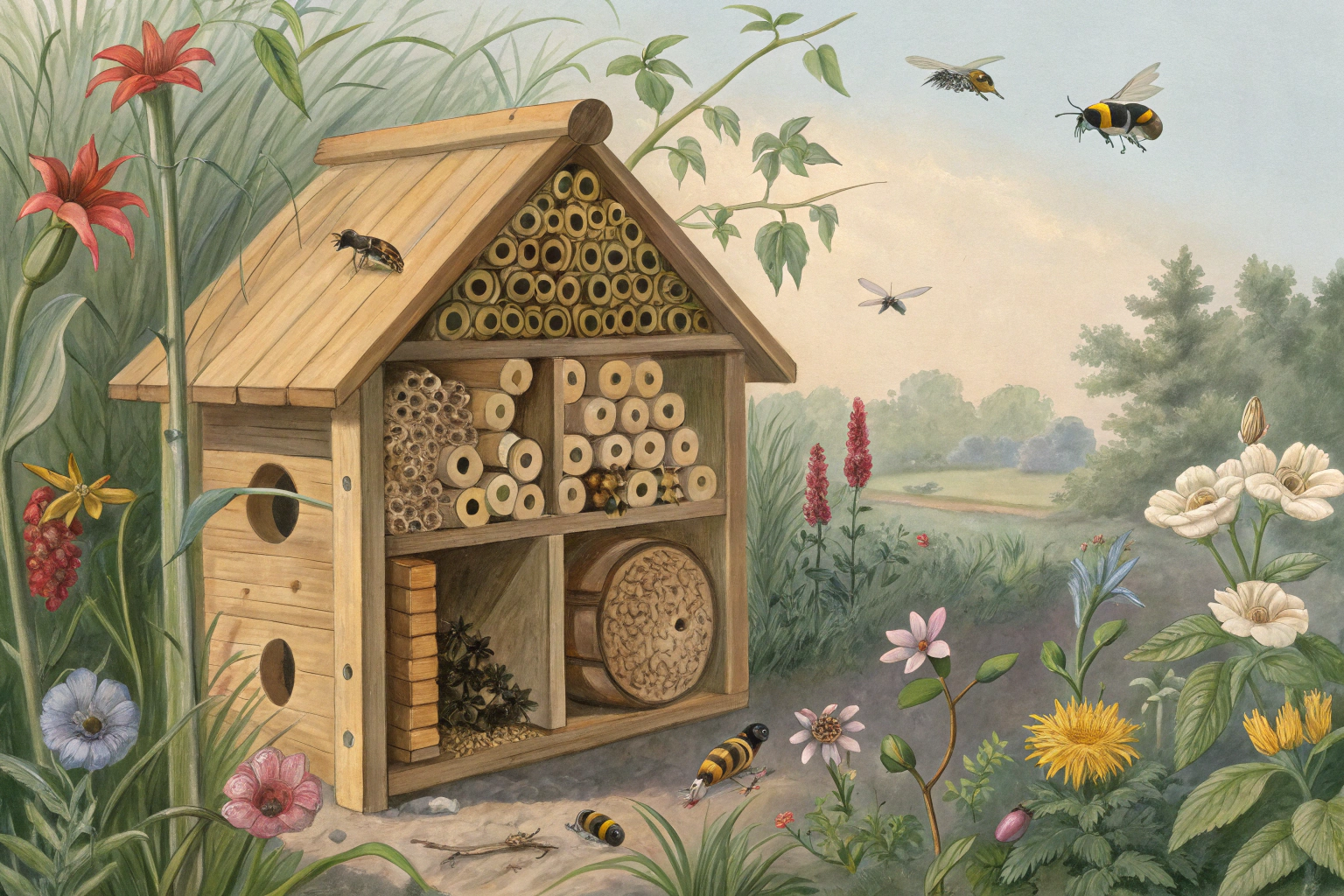
DIY bee hotel
Build a DIY bee hotel to help solitary bees that pollinate a third of crops and much backyard fruit. Use untreated hardwood or bamboo for your DIY bee hotel; drill 3–8 mm holes 4–6 inches deep with one closed end. Mount the DIY bee hotel 3–6 feet high, facing southeast, under an eave to stay dry and out of wind.
Plant native flowers, set a shallow water dish, skip sprays, and your pollinator sanctuary will hum. Ready to build?
Cheatsheet: Build a Luxury Haven for Bees
🌻 Pollinator Power
1 in 3 bites of food comes from bee-pollinated plants. Wild bee populations support 75% of flowering crops.
🧰 Tools and Products You'll Need
- Drill (with 3/32 to 3/8 in or 2.5–10 mm bits)
- Hand saw
- Sandpaper (medium grit)
- Untreated wood blocks (at least 4 in/10 cm deep)
- Bamboo canes or paper tubes (3–8 in / 8–20 cm long)
- Natural twine, wood glue, or wire
- Waterproof shelter/box
- Native flowering seeds or plants
🏡 Design for Bee Safety
- Hole size: 3/32–3/8 in (2.5–10 mm) diameter only, to avoid pests.
- Depth: Minimum 4 in (10 cm) to protect from temperature swings.
- Avoid treated wood or plastic.
- Include overhanging roof for rain protection.
🛠️ Steps to Build
- Cut block of wood 8x8x4 in (20x20x10 cm) or use a small wooden box.
- Drill holes horizontally; spacing 0.5 in (1–1.5 cm) apart (not through).
- Cut bamboo canes or tubes to 6 in (15 cm), remove sharp edges.
- Bundle tubes tightly and secure with twine or glue inside the shelter.
- Sand all holes and tube ends smooth to prevent bee wing damage.
- (Optional) Add a sloped overhang for rain protection.
- Mount 3–6 ft (1–2 m) above ground facing south/southeast.
- Anchor securely against wind. Place near native flowers.
🌸 Boost Pollinator Appeal
- Plant diverse, pesticide-free native species within 10 ft (3 m).
- Leave bare soil patches for ground-nesting bees.
- Provide a shallow water dish with pebbles nearby.
🧺 Maintenance & Hygiene
- Replace tubes yearly to limit parasites & disease.
- Clean in late fall. Store occupied tubes in a cool, dry place.
💚 Health & Self-sufficiency
Support nutrient-rich crops (berries, tomatoes) and boost garden yields naturally.
I build a DIY bee hotel for one goal: give solitary bees clean, dry cavities that mimic old beetle burrows and hollow stems. The payoff is heavy fruit set, calmer gardens, and a front-row seat to real pollination work.
My first box went up near a row of currants and the berry yield went up like a good sourdough starter. The trick was less art, more details.
Osmia mason bees use mud to partition cells, while Megachile leafcutter bees use leaf discs. Both are gentle and focus on nectar and pollen, not you.
They do most of their flying once air temps hit about 55 to 60 F or 13 to 16 C. They range only a few hundred feet, so placement matters.
Hole diameter should be 3 to 10 mm or 1/8 to 3/8 inch, with most in the 5 to 8 mm or 3/16 to 5/16 inch sweet spot. Depth should be 10 to 15 cm or 4 to 6 inches for a good sex ratio and cell count.
Front edges need a slight bevel and polish to prevent wing wear. Back ends must be closed to give each tunnel a firm “stop.”
Orient toward morning sun, facing southeast to south. Mount 0.9 to 1.8 m or 3 to 6 ft above ground with a solid backing to cut vibration.
Add a roof with 5 cm or 2 inches of overhang. Keep everything dead level, since bees build cells by gravity.
Use kiln-dried, untreated hardwood blocks or stacked, replaceable paper or cardboard liners. I avoid bamboo since it splinters, molds, and rarely cleans well.
Reed tubes work if you can replace them each season. Drilled blocks are fine if holes are smooth and lined or if you retire the block after one season.
Cut a 15 to 20 cm or 6 to 8 inch deep block from untreated hardwood, or prep bundles of liners in a waterproof box. Leave a solid back.
Drill a grid of holes using sharp bits sized 3, 4, 5, 6, 8, and 10 mm. Space 15 to 20 mm or 5/8 to 3/4 inch apart.
Chamfer entrances lightly with fine sandpaper, then burnish with a dowel. Smooth is safety for wings.
Add a rain roof with an overhang, and mount under eaves or on a post with two screws. Aim for zero wobble.
Label the year on the side. Rotation is everything.
Give it morning sun to warm flight muscles and afternoon shade to avoid cooking brood. Keep the face dry and wind-sheltered.
Place within 15 m or 50 ft of nectar, pollen, and mud or leaf sources. I tuck mine near thyme, blueberries, and a clay patch.
Early spring: set out hotels and cocoons at 50 to 55 F or 10 to 13 C. Add a shallow water dish with stones.
Late spring to midsummer: monitor for parasitoids and birds. Replace any soaked liners.
Late summer: remove occupied liners or blocks to a dry, ventilated shed. Keep them at 10 to 21 C or 50 to 70 F.
Winter: store in a breathable box at 1 to 4 C or 34 to 39 F if you manage cocoons. Set them back out in spring.
Add a 2.5 cm or 1 inch hardware cloth screen 5 cm or 2 inches in front to slow bird pecking. Pull spider webs from the face weekly.
Swap out liners yearly to reduce chalkbrood and mites. Retire drilled blocks after one season unless you can open and sanitize them.
Skip pesticides within 50 ft or 15 m. If you must treat plants, do it at night and avoid bloom.
Stagger bloom from earliest spring to late fall with natives. I rely on red maple, willow, and serviceberry in spring, then penstemon, thyme, and raspberries, and finally asters and goldenrod.
Leave 10 to 20 percent of ground bare for ground-nesting bees. A tidy garden can still spare a sunny patch of soil.
Mason bees need damp clay. I keep a shallow tray of clay-rich soil and water it to the feel of modeling clay.
Leafcutters prefer thin leaves like rose, redbud, and pea-family plants. They harvest at dusk like tiny scissors on wings.
Too shallow holes that skew sex ratios and overheat brood.
Glossy bamboo that traps moisture and spores.
Wobbly mounts that shake larvae. Tighten those screws.
Perpetual hotels never rotated. Treat them like birdhouses and refresh.
Shade all day. Cold bees fly late and forage less.
FAO estimates about 75 percent of leading food crops benefit from animal pollination. That is your tomatoes, apples, berries, and squash riding on tiny wings. [FAO]
A 2015 study of urban bee hotels reported high occupation by solitary wasps and some non-native bees, with lower native bee use, which argues for better design and management. I saw the same until I fixed hole sizes, sun exposure, and yearly liner changes. [MacIvor & Packer, PLOS ONE 2015]
“Use clean, correctly sized nesting tunnels, protect from rain, and replace materials yearly.” That single habit cut disease in my setups and matches guidance from Xerces Society and USDA.
Solitary bees rarely sting and have no hive to defend. I set hotels at eye level for kids and they get a quiet science lesson beside the tomatoes.
Kits save time if the specs are right. Look for liner replacements, hardwood faces, and a real roof.
Replaceable paper or cardboard liners in a weatherproof box. My yield and hygiene improved fast. Brands that offer annual refill packs serve you well.
Hardwood blocks with sanded holes and removable back plates. Good for inspection if you keep them dry.
Reed bundles sized 6 to 8 mm with removable liners inside each reed. Moisture control matters.
Bee bricks for masonry walls with 5 to 8 mm cavities for new builds. Great in tight courtyards with radiant morning heat.
Predator guards with 1 inch mesh that sit 2 inches off the face. Birds learn fast.
Untreated hardwood block, 6 by 8 by 10 inches or 15 by 20 by 25 cm.
Paper liners, 4 to 6 inches or 10 to 15 cm deep, replaceable yearly.
Galvanized roof with 2 inch or 5 cm overhang.
Coarse and fine sandpaper for entrance burnishing.
1 inch or 2.5 cm hardware cloth predator screen.
Mounting bracket or two exterior screws into a post or wall stud.
Clay tray for mason bees and a shallow water dish with stones.
Wood offcuts were free, liners cost 12 to 25 USD or 11 to 23 EUR per 100, and a small roof panel ran 8 to 15 USD or 7 to 14 EUR. The screen, screws, and labels added 6 to 10 USD or 6 to 9 EUR.
A solid DIY build lands under 50 USD or 47 EUR and lasts years with liner replacements. Kits run 30 to 120 USD or 28 to 112 EUR depending on size and refills.
Hedgerows with native shrubs for windbreak and forage.
Mini meadow strips 1 by 3 m or 3 by 10 ft to bridge bloom gaps.
Dead wood bundles in a dry corner for beetles and other cavity makers.
Night lighting kept low and warm so moth pollinators can work.
Do bee hotels attract wasps? Yes, solitary wasps use similar cavities, and they control caterpillars, which helps gardens.
How many holes per hotel? I cap a face at roughly 80 to 120 holes and spread multiple small hotels around the garden.
Paint or stain? Leave nest faces bare and smooth. If you must finish, use exterior paint only on the roof and sides, never inside holes.
Winter storage? Move occupied liners to a dry, ventilated shed, 34 to 39 F or 1 to 4 C if managing cocoons, and protect from mice.
How close to crops? Within 5 to 15 m or 15 to 50 ft improves pollination efficiency, and I keep at least one unit near fruit trees.
Xerces Society: cavity-nesting bee guidelines covering hole sizes, hygiene, and placement. USDA NRCS Plant Materials notes on pollinator habitat.
FAO pollination briefs on crop dependence. MacIvor and Packer 2015, PLOS ONE, urban bee hotel occupancy patterns.

Want smarter plant choices? 🪴
Frequently Asked Questions: DIY Bee Hotels
Where should I place my DIY bee hotel for best results?
Position your bee hotel at least 3 to 5 feet (about 1 to 1.5 meters) above the ground, facing south or southeast to capture morning sunlight. Secure the structure firmly against a shed, wall, or stake so it remains stable in strong winds. Choose a location sheltered from heavy rain and away from thick vegetation that could block bee access.
What materials create the safest nesting sites for solitary bees?
Use untreated hardwoods, hollow stems like bamboo or phragmites, and paper tubes. Avoid plastic and softwoods, which trap moisture and increase the risk of fungus or mold. Ensure tubes or holes have smooth interiors and closed backs to protect developing larvae.
How often should I clean or maintain my bee hotel?
Inspect your bee hotel every autumn. Remove and replace any tubes or blocks showing mold or parasite infestation. Cleaning once each year, after bees have emerged in late spring or early summer, helps reduce disease. Replace materials every two to three years for maximum safety.
Can I attract other pollinators with my bee hotel?
While a DIY bee hotel mainly supports solitary bees, nearby plantings of native wildflowers and herbs draw butterflies, hoverflies, and other pollinators. Mix early, mid, and late season blooms to provide forage throughout the growing season.
How do I protect the bees from predators and extreme weather?
Add a mesh front with openings at least half an inch (about 1.2 centimeters) wide to deter birds without blocking bee entry. In regions with severe winter temperatures below 20°F (minus 6°C), move the hotel to an unheated shed or garage until early spring.
What are the ideal hole sizes for different bee species?
Drill or use tubes ranging from one-eighth to three-eighths of an inch (3 to 10 millimeters) in diameter, and 4 to 6 inches (10 to 15 centimeters) deep. Varying the diameter supports a wider range of solitary bee species and increases nesting success.
What are common mistakes to avoid?
Avoid using glazed bamboo, which holds moisture, and don’t include open-ended tubes or holes that encourage pests. Never hang your bee hotel from a single nail or rope, as movement disrupts nesting and deters bees. Finally, do not stack hotels too closely together, which encourages mold and parasites.
Build a DIY bee hotel that earns tenants. Morning sun, south or southeast, about chest height. Solid mount and a small roof. Use untreated wood with paper liners or clean reeds. Hole sizes 3 to 8 mm, 4 to 6 inches deep, closed at the back. Keep it dry and tight. Avoid plastic. Keep clusters small to cut disease. Leave bare soil for ground nesters, a shallow water dish, and a little mud.
Feed the neighborhood too. Plant native plant seeds that flower in sequence. Skip broad sprays, aim for fewer pesticides. Clean yearly. Swap spent liners each fall, toss anything moldy. For more on welcoming pollinators, tune your plant list and placement. Keep it simple, steady, and the solitary bees will pay rent in blossoms.
The Science Behind DIY Bee Hotels
Wild bees pollinate up to 80% of all flowering plants, yet solitary bee numbers shrink yearly as nesting sites vanish. A well-designed bee hotel attracts Osmia and Megachile species, boosting pollination in gardens and orchards. Studies published in Scientific Reports confirm bee hotels, when constructed with correct materials and placement, increase local pollinator diversity by up to 42%.
Nesting Preferences: Nature’s Blueprint
- Tube diameter matters: Most mason bees prefer 5 to 8 mm (0.20 to 0.31 inch) openings, 4 to 6 inches (10 to 15 cm) deep. Too wide or shallow attracts predators or deters nesting.
- Material choice: Untreated wood, reeds, and bamboo reduce fungal growth and mimic natural habitats. Avoid plastic and glazed surfaces. Line drilled holes with parchment for safer egg-laying.
- Sun exposure: South or southeast facing hotels warm early in the day, jumpstarting bee activity. Shade or north placement slows brood development and increases mold.
- Height: Position 3 to 6 feet (1 to 2 meters) above ground, fixed to prevent swaying. This height matches wild nesting cavities and deters ants and ground predators.
Health, Hygiene and Lifecycle Management
- Seasonal cleaning: Pathogen buildup reduces bee survival. Empty, clean, and refill tubes every fall. Discard infested materials to halt mite or fungus spread.
- Brood protection: Removable trays or tubes allow inspection and reduce parasite success. Refrigerate capped tubes (2 to 4°C / 36 to 39°F) over winter to prevent premature hatching.
- Floral forage: Plant pollen-rich species within 300 feet (90 meters). Single-flowered varieties like Phacelia, Borage, and native wildflowers sustain bee health and boost pollination nutrition.
Encouraging Native Specialists
- Diversity of cavity size: Mix tubes and drilled blocks in various diameters to attract smaller leafcutters, resin bees, and masked bees.
- Local bamboo and hollow stems: Use prunings from garden perennials for regionally adapted housing. These harbor beneficial microbes familiar to native pollinators.
Effective bee hotels demand annual attention, species-appropriate design, microclimate awareness, and local plant support. Properly managed, they turn a small garden into a resilient pollinator sanctuary with lasting ecological value.
Find out which plants will thrive in your garden!
Answer a few fun questions and get custom plant recommendations perfect for your space. Let’s grow something amazing together!

start your season
